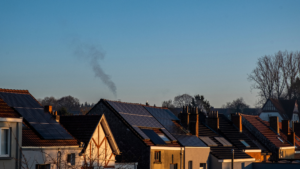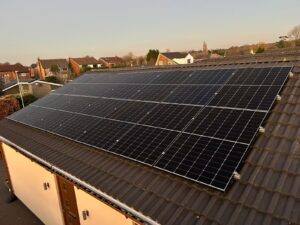As more UK homeowners turn to solar panels to reduce energy bills and lower their carbon footprint, a common question arises: Do I need planning permission for solar panels? The good news is that, in most cases, installing solar panels on residential properties does not require planning permission. However, there are important exceptions and guidelines you should be aware of to ensure your solar installation complies with UK regulations.
General Rule: Permitted Development Rights
In the UK, solar panel installations on residential properties generally fall under Permitted Development Rights (PDR). This means you usually don’t need planning permission, provided your installation meets certain conditions:
- Panels must be mounted on a roof or wall and not project over 20cm from the surface.
- Panels should not exceed the highest part of the roof, excluding the chimney.
- Panels must be installed to minimise visual impact on the building and surrounding area.
- The system must be removed when it’s no longer in use.
Exceptions Where Planning Permission May Be Required
While most homes can benefit from PDR, planning permission may be required in specific situations:
1. Listed Buildings
If your property is a listed building, you must apply for planning permission to install solar panels. The installation must preserve the property’s historical character, which may require using less obtrusive panel designs.
2. Conservation Areas
In Conservation Areas or Areas of Outstanding Natural Beauty (AONB), planning permission may be required if panels are installed on the principal elevation (the front of the property) or where they are visible from public highways.
3. Ground-Mounted Solar Panels
Ground-mounted systems may also fall under PDR but must meet the following conditions:
- No higher than 4 metres.
- Located at least 5 metres from the property boundary.
- Limited to one installation per property.
4. Flats and Multi-Occupancy Buildings
If you live in a flat or shared building, you may need consent from all property owners or the managing agent before proceeding.
Planning Permission for Commercial Solar Installations
Commercial properties and large-scale solar panel systems may have different regulations. Depending on the size and visibility of the installation, planning permission could be required.
How to Apply for Planning Permission
If you do need planning permission, the process typically involves:
- Contacting Your Local Planning Authority (LPA): Seek advice to confirm whether permission is required.
- Submitting a Planning Application: This includes drawings and descriptions of the proposed work.
- Await Approval: The decision can take up to 8 weeks.
Why Complying with Planning Rules Matters
Failing to obtain planning permission when required can lead to:
- Legal action and enforcement notices.
- Potential fines and mandatory removal of the panels.
Key Takeaways
- Most UK homes can install solar panels without planning permission under Permitted Development Rights.
- Exceptions include listed buildings, conservation areas, and ground-mounted systems exceeding specific criteria.
- Always check with your Local Planning Authority if unsure.
By understanding these regulations, you can confidently proceed with your solar panel installation, contributing to energy savings and a sustainable future. Are you looking to take the next step towards solar energy? Contact our team today.




